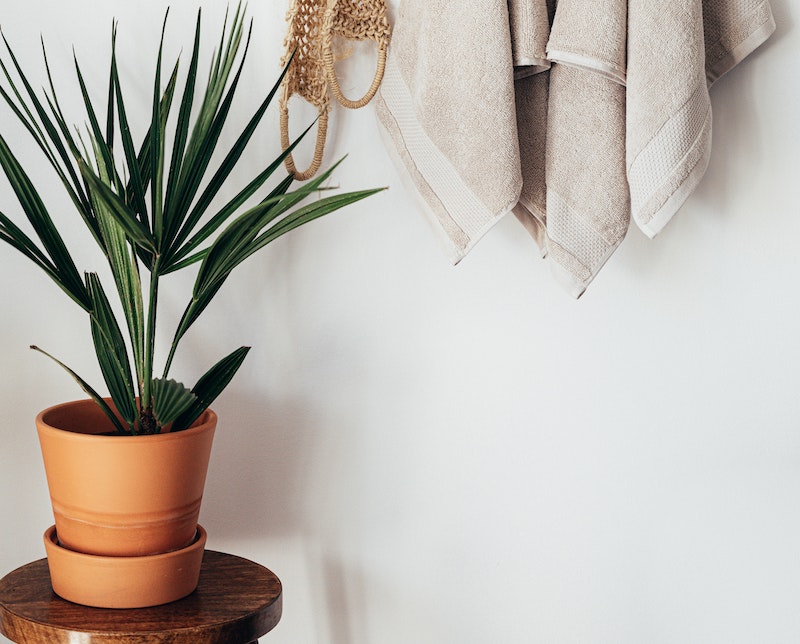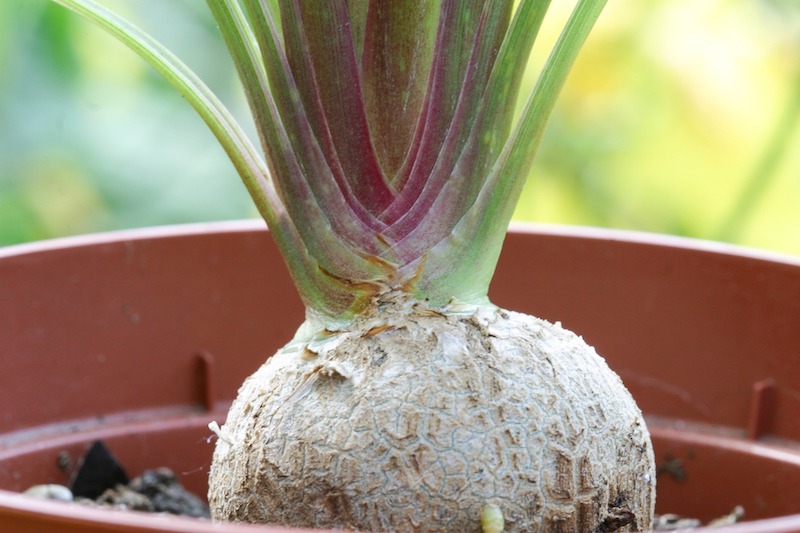Growing Palm Trees
There are thousands of palm tree varieties, and while they come in various shapes and sizes, most are easy to distinguish, thanks to their leafy, green fronds. Palms are tropical or subtropical and typically hail from Asia, South America, or the Caribbean. Palm plants are easy to maintain, making them wonderful houseplants for novices and experts alike. Some palm trees can grow rather tall, making them a natural statement plant, while others maintain a small stature and are better suited to a tabletop.

Palm Sunlight Requirements
Most palm varieties require bright indirect light, making them easy-to-maintain houseplants. Place a palm a few feet away from a bright window or in a north- or east-facing window, where there will be less light. Direct light is damaging and can burn palm fronds, so avoid close proximity to south- or west-facing windows. Rotate the palm once per month or every time you water the plant so that each side receives sunlight.
Planting Palm
Palms like moist soil that is neutral to acidic and well drained. A mixture that contains shredded bark or peat moss or a mix formulated for palms is ideal, although regular potting soil will support healthy palm trees. Most palms have shallow root systems and do not like to be disturbed, so wait until the plant is root bound before repotting. Plan to repot a palm every 3 to 4 years. Select a larger container when transplanting and use fresh soil to support new growth.
Watering Palm
Young palm trees have medium water needs and need frequent watering to bulk up and thrive. Water new trees when the top couple inches of soil are dry. Drainage is essential because while palms like water, they do not tolerate waterlogged soil. Established palms are more drought tolerant and can dry out more between watering sessions. Feel the soil or use a moisture meter to determine the best time to water, and if you are unsure, wait another day to ensure the soil is dry.

Fertilizing Palm
Palms respond well to routine feedings, and giving them a nutritional boost will keep their green fronds lush and full. Feed palms using a balanced fertilizer or a product specially formulated for palms. These lush trees prefer food with increased levels of potassium and manganese. While potassium is included in most fertilizer mixes, you may need to select a palm-specific plant food to secure manganese. Use a water-soluble fertilizer and follow the instructions on the packaging. Fertilize palms when they are actively growing in the warmer months. You do not need to feed palms that are dormant.
Common Palm Problems
Over-pruning is a problem for palms. While a common practice for most houseplants is to remove foliage as soon as it turns yellow or brown, palms can continue to draw nutrients from dying fronds, so wait to remove foliage until it is entirely yellow or brown. Always leave as many fronds in place as possible and avoid getting the plant down to one of two fronds. Routinely inspect the foliage for signs of pests, and wipe the fronds down with a damp cloth to remove dust and debris. Clean fronds are more able to absorb sunlight and exchange air, keeping the plant healthy.
Propagating Palm
While it is possible to propagate palms, it can be challenging. The most effective way to grow a new palm is from seed. Most palms can be propagated through air laying. Using the air-laying technique, a small cut is made on a branch, but the branch is still attached to the parent plant. The incision is wrapped with moss or another medium that will support root formation. When the new roots are long enough, the branch can be removed and planted in soil. Cuttings are not an effective way to propagate palms.

Growing Palm Outdoors
Palm trees can live outside, and moving your potted palm to your deck or patio is a great way to green up the space during the warmer months. Some palm varieties, like the parlor palm, are cold tolerant, while other palm trees need consistently warm temperatures. Wait until the daily low is above 50 degrees before moving a palm outdoors. Place the plant in an area shielded from direct sunlight, and water only when the soil is dry. Drainage is vital for palms, especially when plants are grown outdoors and exposed to rain.
 |
Author Alison Cotsonas - Published 03-07-2023 |
